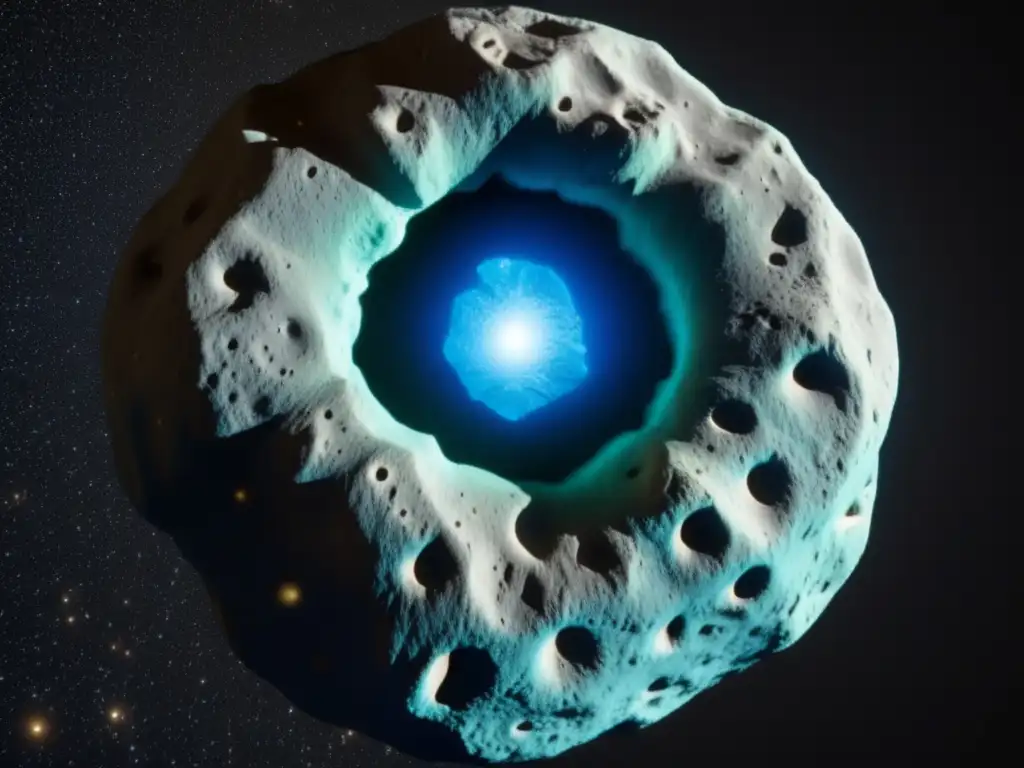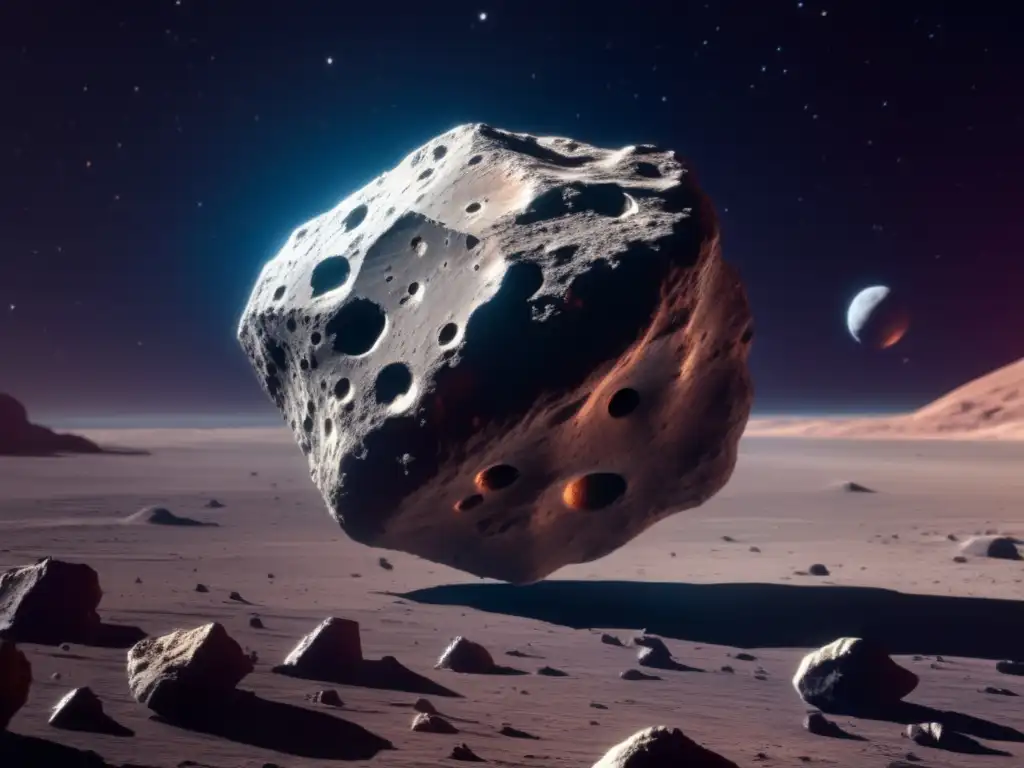Asteroids: The Vessels Of Life In The Universe?

Introduction
Asteroids, those small celestial bodies that orbit around the Sun, have fascinated astronomers and scientists alike for centuries. They are remnants from the early Solar System, and their study can provide insights into the formation and evolution of our planetary neighborhood. But beyond their scientific value, some researchers are now considering asteroids as potential hosts for extraterrestrial life. Could these rocky fragments harbor living organisms, or even entire ecosystems? In this article, we'll dive deep into the intriguing possibility of asteroids being the vessels of life in the vast expanse of the Universe.
Asteroids as Homes for Microbes

Microbes on Earth and Beyond
Microorganisms, often referred to simply as "microbes," are tiny living beings that can exist in virtually every environment on our planet. From the deepest oceans to the highest mountain peaks, microbes have adapted to a wide range of conditions, from extreme heat and cold to high radiation and acidity. Scientists have even discovered microbes living in the most inhospitable places on Earth, such as in Antarctic ice or in the proximity of active volcanoes.
Given their remarkable resilience, it's no wonder that researchers are exploring the possibility of microbes surviving and thriving on asteroids. Some studies suggest that certain types of bacteria, fungi, and algae may be able to survive on the surface or inside of these space rocks, as long as they receive enough energy and nutrients. For instance, some asteroids contain water ice, which could provide a crucial source of hydration for microorganisms. Additionally, some asteroids are rich in minerals such as iron, magnesium, and sulfur, which could serve as building blocks for biological processes.
The Case of the Tardigrades
One of the most intriguing examples of extremophile organisms that could survive on asteroids are the tardigrades, also known as "water bears." These tiny animals, measuring less than one millimeter in length, are famous for their ability to withstand a wide range of environmental stresses, from desiccation to radiation exposure. In 2019, a group of Israeli researchers sent a colony of tardigrades to the Moon aboard the Beresheet spacecraft. Although the mission ultimately failed and the spacecraft crashed, the tardigrades were still able to survive in a state of suspended animation. This experiment demonstrated that some forms of life can withstand the harsh conditions of deep space, at least for a certain period of time.
The Challenges of Asteroid Life
However, the idea of asteroids as habitable worlds is not without challenges. For one, asteroids are exposed to intense radiation from the Sun and cosmic sources, which could damage or destroy any living organisms. Some asteroids also have extreme temperature variations, ranging from hundreds of degrees Celsius during the day to freezing cold at night. Furthermore, the lack of atmosphere and gravity on most asteroids makes it difficult for life to evolve complex structures or to move around. Nonetheless, some researchers believe that certain types of microorganisms, such as those that form biofilms or colonies, could thrive under these conditions, using different survival strategies than Earth-based life forms.
Asteroids as Seeds of Life

The Panspermia Hypothesis
Another way in which asteroids could be linked to the origins of life is through the theory of panspermia. According to this hypothesis, life may have been seeded on Earth (and possibly on other planets) by meteorites and comets that carried organic compounds and microbes from other parts of the Universe. The idea of panspermia has gained traction in recent years, as more evidence has emerged of the abundance of organic molecules in space and the potential for interstellar transport of life forms. Some researchers have even proposed that asteroids could serve as "interstellar ark" that transport life across vast distances in the Galaxy.
The Building Blocks of Life
While the idea of panspermia is still a matter of debate, there is no doubt that asteroids contain some of the essential raw materials for life to emerge. For example, amino acids, the building blocks of proteins, have been detected in meteorites and asteroids, suggesting that these organic compounds may be widespread in the Cosmos. Other complex molecules, such as nucleobases and lipids, have also been found in asteroids, further supporting the idea that these space rocks could have played a role in the origin of life on Earth. In fact, some researchers propose that asteroids could have delivered not only the organic compounds but also the energy necessary to trigger the chemical reactions that led to the first living cells.
Asteroids and Astrobiology

The Search for Life Beyond Earth
The study of asteroids in relation to extraterrestrial life is part of a broader field known as astrobiology, which seeks to understand the conditions, processes, and potential for life in the Universe. Astrobiologists investigate a wide range of environments, from the icy moons of Jupiter and Saturn to the rocky planets outside our Solar System, in search of clues about the evolution of life and the prospects for finding life elsewhere. The study of asteroids provides a complementary perspective to these efforts, as asteroids offer insights into the early Solar System and the possible pathways for the origin and dissemination of life.
A New Era of Asteroid Exploration
With the advent of new technologies and missions, the study of asteroids as habitats for life has entered a new phase of exploration. From NASA's OSIRIS-REx and JAXA's Hayabusa2 missions to private initiatives such as Planetary Resources and Deep Space Industries, there is growing interest in mining and colonizing asteroids for their resources and strategic value. While these ventures are focused primarily on the economic and technological potential of asteroids, they also offer opportunities to study the nature and diversity of these intriguing objects and their connection to the origin and evolution of life in the Universe.
Frequently Asked Questions

-
Can life really survive on asteroids?
The conditions on asteroids are harsh and inhospitable, but some forms of life may be able to adapt and survive, especially extremophile microorganisms such as tardigrades or bacteria.
-
Could asteroids have brought life to Earth?
The theory of panspermia suggests that life could have been transported to Earth (and other planets) by meteorites and comets, which contain organic molecules and microbes.
-
What are the challenges of studying asteroids for astrobiology?
Asteroids are remote and difficult to access, and their properties vary widely depending on their size, composition, and history. Moreover, their connection to the origins of life is still a matter of debate and research.
-
What are the benefits of studying asteroids for space exploration?
Asteroids offer valuable resources, such as water, metals, and minerals, that could help sustain human exploration and colonization of space. Moreover, they provide insights into the early Solar System and the dynamics of small bodies in the Universe.
-
What are some of the current asteroid missions and initiatives?
Some of the ongoing or planned asteroid missions include NASA's OSIRIS-REx, JAXA's Hayabusa2, and private initiatives such as Planetary Resources and Deep Space Industries. These missions aim to study the composition, structure, and potential of asteroids for mining and colonization.
Conclusion
The idea of asteroids as potential habitats or sources of life in the Universe is both exciting and challenging. While we still have much to learn about these small but mighty space rocks, the evidence so far suggests that they could represent a new frontier in astrobiology and space exploration. Whether we find living organisms on asteroids or not, the study of these intriguing objects helps us better understand our place in the Cosmos and the diversity of life forms that may exist beyond our planet. So let's keep exploring and discovering, and who knows what treasures we may uncover in the vast expanse of the Universe.
Additional Resources

- NASA Astrobiology: Panspermia
- Asteroids as Habitable Worlds: The Connection Between Asteroids, Astrobiology, and Deep Space Exploration
- NASA Astrobiology Institute
 The Bridge Between Planets: How Asteroids Could Carry Life
The Bridge Between Planets: How Asteroids Could Carry Life Life On The Edge: Could Asteroids Harbor Extraterrestrial Microbes?
Life On The Edge: Could Asteroids Harbor Extraterrestrial Microbes? Cosmic Arks: Can Asteroids Transport Life?
Cosmic Arks: Can Asteroids Transport Life?If you want to discover more articles similar to Asteroids: The Vessels Of Life In The Universe?, you can visit the Asteroids and Extraterrestrial Life category.
Leave a Reply

Articulos relacionados: